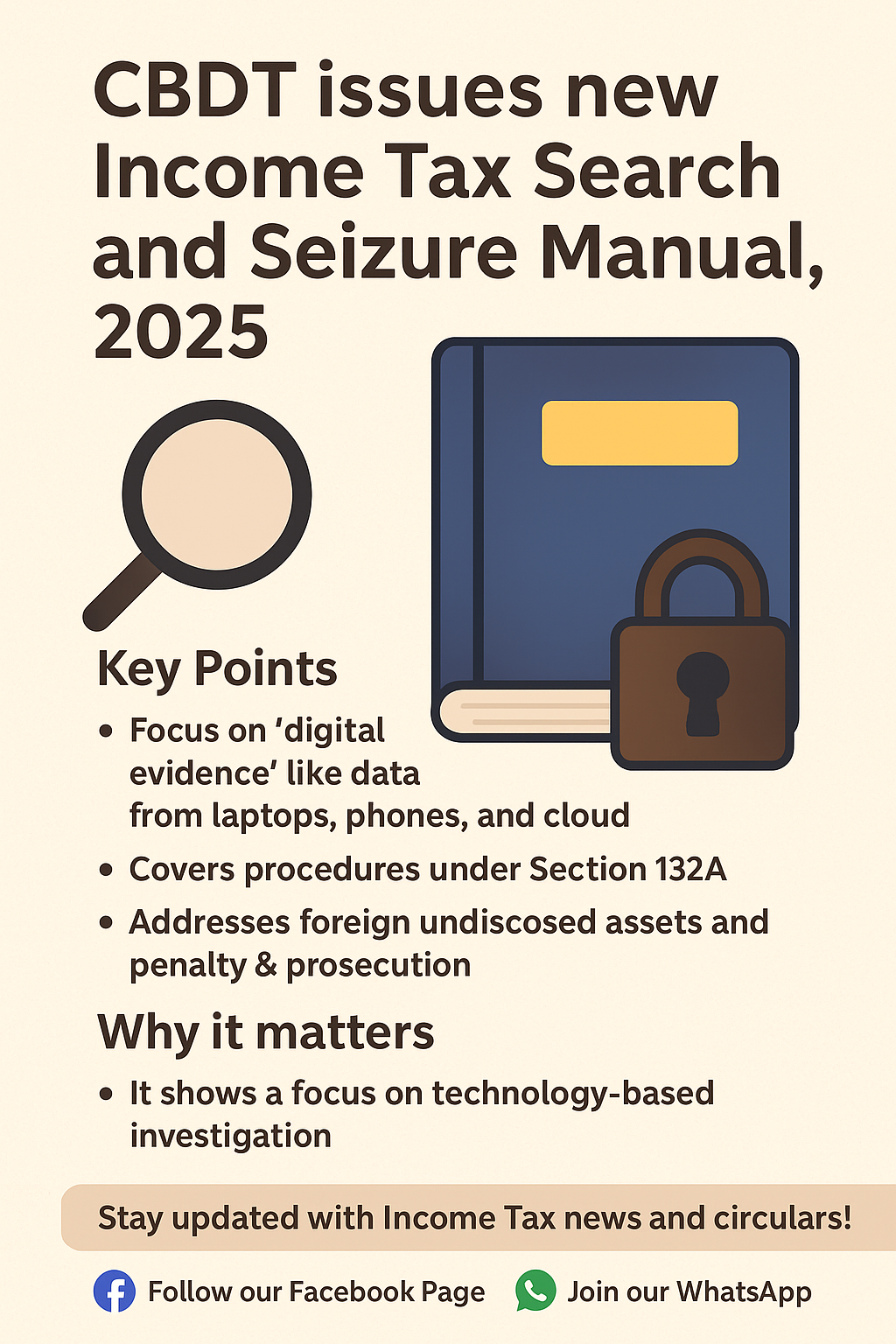The Central Board of Direct Taxes recently convened a Board meeting chaired by the Chairman, CBDT to deliberate on key reforms in the Income Tax Department’s functioning particularly focusing on the Faceless Assessment regime and the introduction of a Ledger Card system for accountability. During the meeting, a various proposal were presented and discussed.
The first agenda centred around the proposed Ledger Card system aimed at tracking the performance and accountability of assessing officers. The PCIT (Audit), Pune presented the committee’s findings on the format, rationale and accessibility of Ledger Cards. The Chairman, CBDT directed the CIT (A&J) to reconstitute the committee with inclusion of NaFAC and ITBA representatives and submit a comprehensive report covering all aspects within a week.
The second major agenda dealt with strengthening the Faceless Assessment framework. Based on five years of experience and recommendations from the Directorate of Administrative Reforms and Public Grievances, the Board deliberated on critical challenges such as quality of orders, high incidence of ex-parte assessments due to taxpayers’ non-compliance and shortage of human resources. Several key decisions were taken during the meeting to address the issues arised.
One substantial decision was the reduction of cases selected for review by the Review Unit from 40 to 10 percent thereby allowing officers in Review Unit to assist the Assessment Units and enhance capacity. The Board also decided that officers posted in Technical Units and Review Units could simultaneously take up assessment work ensuring optimal utilization of manpower. The proposal to establish Centres of Excellence for Faceless Units at seven major stations was also approved with a directive to prepare detailed matrices covering space, staffing and restructuring requirements.
In order to ease the workload of Unit Heads, the Board streamlined approval requirements, limiting them to ten specific actions such as references to TPO, proposals for penalty and final orders while removing the requirement for approval of show-cause notices under section 144. Another important decision is stamping the names of Assessing Officers and Unit Heads only on departmental copies of assessment orders to ensure the internal accountability without disclosing the identification of officer to taxpayers.
Most importantly, the Board has approved ITBA enhancements to grant independent logins for Inspectors, Office Superintendent and Tax Assistants with defined roles, audit trails and proactive alerts. Visibility of Assessing Officer details was also extended up to the CCIT (Faceless) reinforcing accountability across the faceless hierarchy. Further, flexibility was granted to Faceless CCITs to redistribute cases through randomized allocation in exigencies such as vacancies or leave.
Periodic review was institutionalized requiring every PCIT (AU) to review 200 orders annually with observations to be recorded in the Ledger Card of each officer. For improving compliance, the Board emphasized on leveraging KYC compliant email and mobile details from banks, Aadhaar linked data and even exploring communication via Whatsapp though the earlier proposal of mandating intermediary contact information was dropped.
On the issue of high-pitched assessments, the Board decided against automatic referrals to Local High-Pitch Scrutiny Assessment Committees. Instead, such cases would follow audit-like workflows and be recorded in Ledger Cards. For Non-Digital Footprint cases, the Board deferred decision but directed formation of a committee to identify sources, frame SOPs and recommend verification protocols.
The deliberations reflect CBDT’s focus on refining the faceless regime ensuring quality of assessments, enhancing accountability through Ledger Cards and leveraging technology for effective taxpayer communication. These decisions mark another step towards a more transparent, efficient and taxpayer friendly income tax administration.
The Income Tax Department is planning and undergoing a structured re-organisation to strengthen efficiency, accountability and transparency. The gist of the agenda/ Proposal, decision/ direction and action owner is as under;
| Agenda / Proposal | Decision / Direction | Action Owner |
| Committee on Maintaining Ledger Card | Reconstitute Committee including NaFAC & ITBA; submit comprehensive report within a week | CIT (A&J), CBDT & Committee |
| Assign VU functions to JAO | Analyse concurrent jurisdiction; check statutory requirements | TPL Division, Pr. DGIT (HRD), Pr. CCIT (NaFAC), Directorate of Systems |
| Assign RU functions to AU | Reduce review cases from 40% to 10%; RU officers assist AU | Pr. CCIT (NaFAC), Directorate of Systems |
| Diversion of TU manpower | AU, RU, TU officers can perform assessment along with existing functions | Pr. CCIT (NaFAC), Directorate of Systems |
| Establish Centres of Excellence (7 cities) | Prepare implementation matrix: space, HR, restructuring | Pr. DGIT (Admin & TPS), Pr. DGIT (HRD), Pr. CCIT (NaFAC) |
| Reduce Unit Head workload | Approval required for 10 key actions (excluding SCN u/s 144) | Pr. CCIT (NaFAC), Directorate of Systems |
| Stamping AO & Unit Head names on orders | Names on departmental copy only; once stamped, AO not reassigned to same PAN | Pr. CCIT (NaFAC), Directorate of Systems |
| ITBA access for ITI, Sr. TA, TA | Independent logins, defined roles, alerts, audit trail | Pr. CCIT (NaFAC), Directorate of Systems |
| Visibility of AO details to senior officers | AO visible to Unit Heads → CCIT (Faceless); accountability shared | Pr. CCIT (NaFAC), Directorate of Systems |
| Flexibility to CCIT for redistribution | Randomized allocation; options: ITO / AC/DC / any officer; reallocation triggered by PCIT (AU) | Pr. CCIT (NaFAC), Directorate of Systems |
| Periodic review in Faceless Assessment | 200 orders/year per PCIT (AU); ledger cards to capture review comments | Pr. CCIT (NaFAC), Directorate of Systems |
| Improve taxpayer compliance | Use KYC/email/mobile/Aadhaar; WhatsApp possible; remove mandatory intermediary info | Pr. CCIT (NaFAC), Directorate of Systems |
| Auto-referral to LHPSACs | Not approved; cases follow audit-like workflow; included in ledger cards | Pr. CCIT (NaFAC), CIT (A&J), Directorate of Systems |
| Exclusion of Non-Digital Footprint Cases | Committee to study sources; SOP; pre-validation; physical verification; decision deferred | To be constituted |


